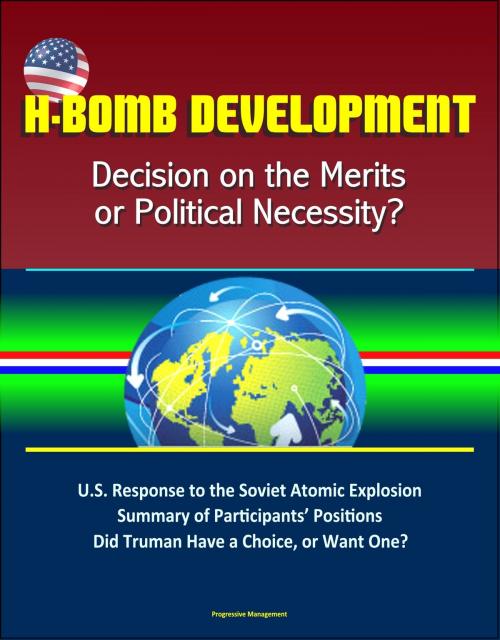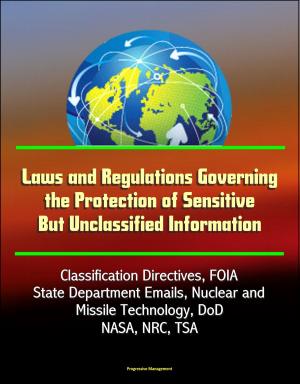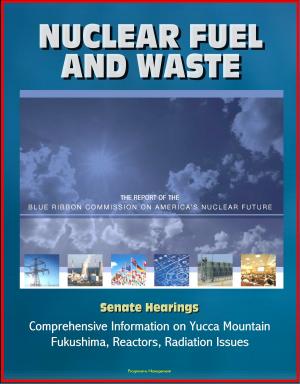H-Bomb Development: Decision on the Merits or Political Necessity? U.S. Response to the Soviet Atomic Explosion, Summary of Participants’ Positions, Did Truman Have a Choice, or Want One?
Nonfiction, History, Military, Nuclear Warfare, Weapons| Author: | Progressive Management | ISBN: | 9781370395217 |
| Publisher: | Progressive Management | Publication: | February 24, 2017 |
| Imprint: | Smashwords Edition | Language: | English |
| Author: | Progressive Management |
| ISBN: | 9781370395217 |
| Publisher: | Progressive Management |
| Publication: | February 24, 2017 |
| Imprint: | Smashwords Edition |
| Language: | English |
This excellent report has been professionally converted for accurate flowing-text e-book format reproduction. This monograph employs a historical analysis to review the debate and subsequent decision within the US government in 1949 and 1950 over whether to pursue an accelerated program to develop thermonuclear weapons. The development of the thermonuclear bomb by the United States and Soviet Union in the early 1950s significantly altered the balance of power between nations and cemented the status of the United States and Soviet Union as superpowers. This paper addresses two fundamental questions: what led to the US decision to pursue thermonuclear weapons and how that decision was made.
Crisis After Crisis * Thermonuclear Development to 1949 * Soviet Atomic Explosion * US Response: The H-bomb? * Summary of the Participants' Positions * Did Truman Have a Choice...or Want One ?
The development of the thermonuclear bomb by the United States and Soviet Union in the early 1950s was one of the most significant events in modern history. The new weapon and its derivatives significantly altered the balance of power between nations and cemented the status of the United States and Soviet Union as superpowers, each with the capability to destroy any nation on earth in a manner unimaginable ten years earlier. The new weapon, combined with the antagonistic political ideologies of the two nations, also exacerbated the deepening Cold War, which shaped the latter half of the twentieth century and continues to influence international relations in the twenty-first. The decision to develop thermonuclear weapons leads to many interesting historical, political and military questions, but two of the most fundamental are what led to the United States decision to pursue them and how was the decision made. This paper attempts to answer those two questions, and in the process argues that despite a months-long debate, by the time the administration announced a decision President Truman had no other viable option but to pursue thermonuclear weapons.
This excellent report has been professionally converted for accurate flowing-text e-book format reproduction. This monograph employs a historical analysis to review the debate and subsequent decision within the US government in 1949 and 1950 over whether to pursue an accelerated program to develop thermonuclear weapons. The development of the thermonuclear bomb by the United States and Soviet Union in the early 1950s significantly altered the balance of power between nations and cemented the status of the United States and Soviet Union as superpowers. This paper addresses two fundamental questions: what led to the US decision to pursue thermonuclear weapons and how that decision was made.
Crisis After Crisis * Thermonuclear Development to 1949 * Soviet Atomic Explosion * US Response: The H-bomb? * Summary of the Participants' Positions * Did Truman Have a Choice...or Want One ?
The development of the thermonuclear bomb by the United States and Soviet Union in the early 1950s was one of the most significant events in modern history. The new weapon and its derivatives significantly altered the balance of power between nations and cemented the status of the United States and Soviet Union as superpowers, each with the capability to destroy any nation on earth in a manner unimaginable ten years earlier. The new weapon, combined with the antagonistic political ideologies of the two nations, also exacerbated the deepening Cold War, which shaped the latter half of the twentieth century and continues to influence international relations in the twenty-first. The decision to develop thermonuclear weapons leads to many interesting historical, political and military questions, but two of the most fundamental are what led to the United States decision to pursue them and how was the decision made. This paper attempts to answer those two questions, and in the process argues that despite a months-long debate, by the time the administration announced a decision President Truman had no other viable option but to pursue thermonuclear weapons.















